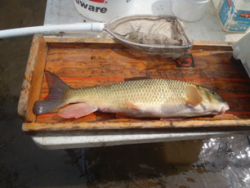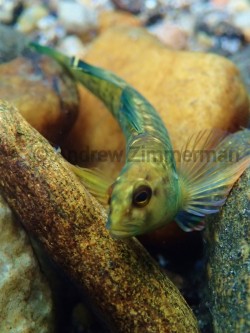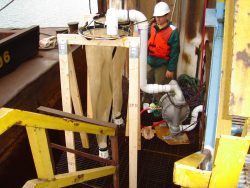EnviroScience Could Be Your Solution to NPDES CWA Section 316 (a) and (b) Issues
With NPDES permit application deadlines nearing, EnviroScience can efficiently get you the information you need to satisfy your 316 (a) and (b) requirements. EnviroScience works closely with you and your clients to negotiate the most appropriate study plans, field sampling programs, and intake technologies for your facility. We maintain an in-house staff of water resource engineers and fisheries scientists with experience in numerous watersheds, including riverine, lake, and coastal habitats. Our extensive field knowledge and access to large fisheries datasets allows us to provide an exceptional review of biological community around your facility.
Section 316 (a) and (b) of the Clean Water Act, through the National Pollution Discharge Elimination System (NPDES) program, establishes requirements and standards for the location, design, construction, thermal discharge, and capacity of cooling water intake structures. The rule covers approximately 1,065 existing facilities that withdraw at least 2 million gallons per day of cooling water from surface water throughout the United States. The withdrawal of cooling water can affect aquatic organisms, including phytoplankton, zooplankton, fish, crustaceans, shellfish, and many other forms of aquatic life. EnviroScience is uniquely set up with a large staff of fisheries biologist that hold collecting permits in over 15 states, and a group of engineers that are experienced in NPDES regulatory requirements. A summary of services includes:
withdraw at least 2 million gallons per day of cooling water from surface water throughout the United States. The withdrawal of cooling water can affect aquatic organisms, including phytoplankton, zooplankton, fish, crustaceans, shellfish, and many other forms of aquatic life. EnviroScience is uniquely set up with a large staff of fisheries biologist that hold collecting permits in over 15 states, and a group of engineers that are experienced in NPDES regulatory requirements. A summary of services includes:
- Developing sampling protocol and collection methods, including a comprehensive health and safety plan,
- Baseline Biological Characterizations,
- Thermal data collection and Mapping,
- Literature reviews of species within the Area of Influence (AOI),
- Freshwater Mussel Surveys within an AOI,
- Adult fish and Ichthyoplankton collection and identification,
- Developing appropriate Representative and Important Species (RIS) lists using available data sources and infield data,
- Using multi-metric biotic indices such as the Index of Biotic Integrity to assess community structure and function, as well as community responses to elevated temperatures,
- Commercial diving operations to clean intake structures and establish dimensional data,
- Generating detail engineering drawings for intake structures where necessary, and
- Evaluating your intake structure for effective area and intake velocity.
EnviroScience clients range from small industrial facilities withdrawing less than 10 MGD to large nuclear facilities over 250 MGD. EnviroScience maintains an  inventory of state-of-the-art technology and field equipment for projects of all sizes. This includes a large fleet of sampling and diving vessels, acoustic doppler current profilers (ADCPs), thermal monitoring arrays, electrofishing gear for any application, water quality meters, work trailers, GPS units, depth/temperature and flow survey equipment, extensive diving and underwater construction equipment, and more. EnviroScience maintains a fleet of more than 15 boats and 25 vehicles ready for any sized project or condition. In addition, our engineering staff is experienced with Section 316(b) requirements for NPDES Permit applications and have assisted our clients with completing the necessary studies and reports for submission to regulatory agencies.
inventory of state-of-the-art technology and field equipment for projects of all sizes. This includes a large fleet of sampling and diving vessels, acoustic doppler current profilers (ADCPs), thermal monitoring arrays, electrofishing gear for any application, water quality meters, work trailers, GPS units, depth/temperature and flow survey equipment, extensive diving and underwater construction equipment, and more. EnviroScience maintains a fleet of more than 15 boats and 25 vehicles ready for any sized project or condition. In addition, our engineering staff is experienced with Section 316(b) requirements for NPDES Permit applications and have assisted our clients with completing the necessary studies and reports for submission to regulatory agencies.
